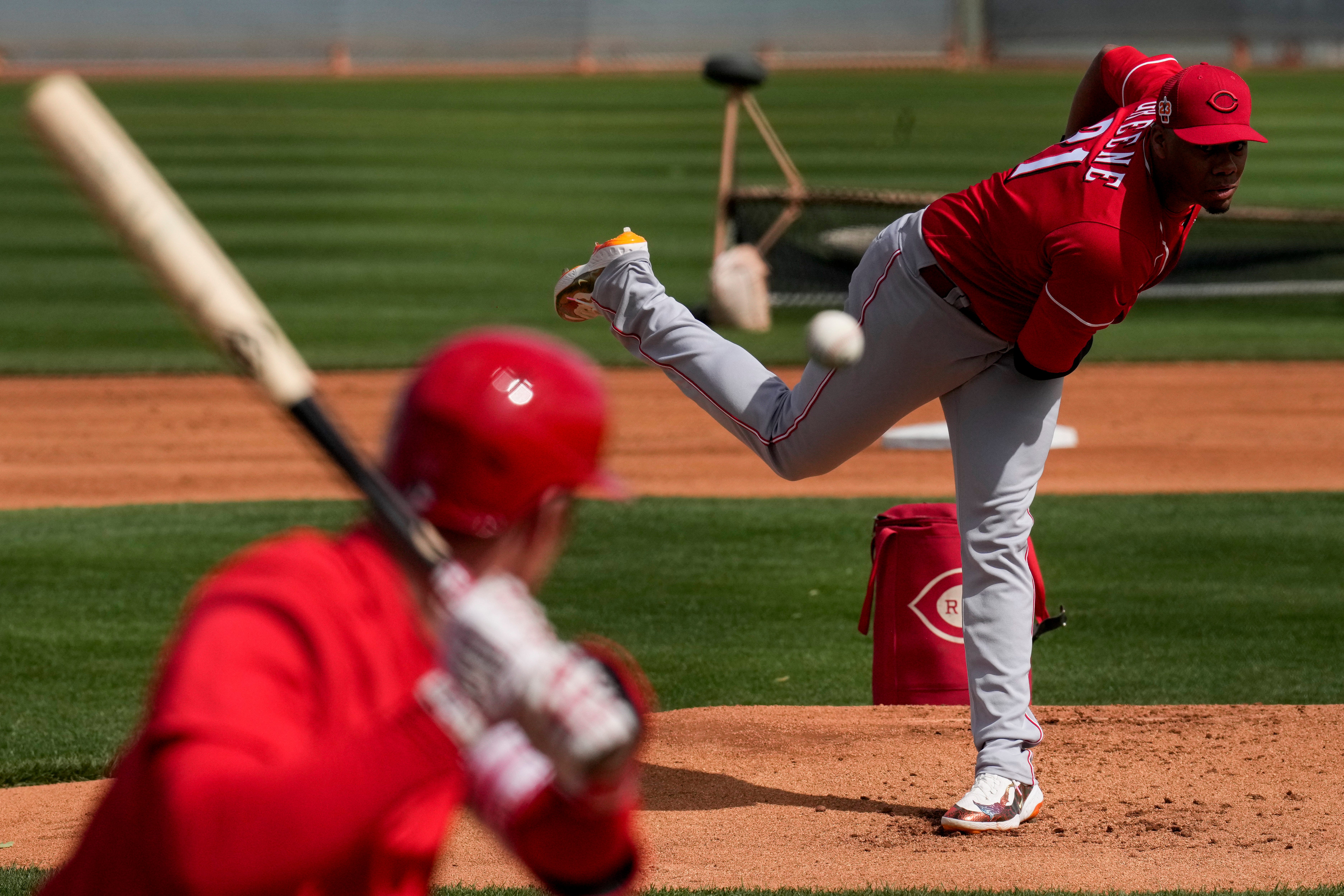[ad_1]
Major League Baseball players and managers are a very creative group, but lately, that creativity had taken a back seat to the proliferation of technology.

MLB rule changes: bigger bases, pitch clocks
Major League Baseball will institute rule changes in 2023 designed to speed up the game,, including pitch clocks and bigger bases to encourage more stealing and make things safer for the players. (Feb 23) (AP video: Daniel Kozin)
AP
The 2023 baseball season marks one of the biggest single-season rule overhauls in the game’s history, and, as a former World Series-winning owner and a lifelong fan, I say, bring it on.
When all 30 Major League Baseball teams took the field on Opening Day, they were on the clock, standing in the infield dirt, arriving sooner at the bases, trying to drive home a “ghost runner” and playing their positions. Topps baseball cards might need to unveil an “umpire line” because umpire discretion will become a crucial element – a potential wild card in how a game is lost or won.
Rule changes are a crucial part of the growth in any sport. Baseball has changed diamond sizes, the range of the strike zone and the height of the pitcher’s mound multiple times since the first World Series in 1903.
There were purists who resisted Jumbotrons and batter walk-up music too. Now, no one would think of playing a game without them.
Opinions in your inbox: Get exclusive access to our columnists and the best of our columns
Baseball plays major role in US history: President Bush’s first pitch, FDR’s Opening Day record
Under the leadership of MLB Commissioner Rob Manfred
The 2023 innovations are not simply exciting for fans; they are great for players and coaches as well because they return the all-important human element to the game.
Baseball players and managers are a very creative group, but lately, that creativity has taken a back seat to the proliferation of technology.
Every organization employs analytic specialists who run game matchups through probability simulators to recommend batting orders and try to predict outcomes. After their turn in the batter’s box, players sit in the dugout hunched over electronic devices, watching slow-motion replays of their performance rather than talking with coaches and fellow players about what they saw.
Next, someone will try to put artificial intelligence in the broadcast booth.
It’s time to make baseball about people again.
What if the concierge is a robot?: How artificial intelligence will change your hotel stay
How far will we let AI go?: ChatGPT made up research claiming guns aren’t harmful to kids
We are never going to remove the technical side of sports. But what MLB, under the leadership of Commissioner Rob Manfred, has smartly done with these rule changes, beyond accelerating the pace of play, is return the focus to the people who play, call and coach the game.
What was missing from our national pastime
I think that’s what both diehard and casual baseball fans were instinctively missing from our national pastime. If you look at each major change, it is people-driven. It puts instinct, quick reactions and human athleticism back into the ballpark.
No algorithm can fully capture how an individual pitcher, or a batter, will perform under the pressure of the new pitching clock. Both sides will have to think and react on their feet.
The permanent addition of a ghost runner on second base when a game goes into extra innings adds tension and unpredictability.
Bigger bases should mean fewer player collisions and injuries – and hopefully, more base stealing.
And MLB’s move to outlaw “defensive shifts” is a return to how baseball was intended to be played. A shortstop will have to stand between the second and third bases with his toes at least touching the dirt until the ball leaves a pitcher’s hand; no more stacking the defensive decks to try to achieve an “easy” out.
The 2022 lockout: MLB, you had to go make this grown woman cry
The real March Madness: Why don’t NCAA schools pay college athletes who make them billions?
Moreover, teams can no longer attempt to game the system and the statistics by substituting position players as pitchers rather than using their pitching staff. Instead, you will have to play with the team you built.
Finally, under these new rules, umpires have been given a lot more “discretion” on everything from when to start pitching clocks to timeouts, ball changes, catchers fiddling with gear and assessing penalties. This means the human element will be out in fuller force – to the delight or dismay of fans, depending on which side you are rooting for.
Great baseball players have much in common with great artists. Both put their talents on the line to create something truly memorable for the public. I once asked the legendary artist Saul Steinberg why he loved baseball. He replied, “Because, at any given moment in the game, there are endless possibilities for what can happen.”
I hope 2023 will be remembered as the year the endless possibilities returned to baseball. We are all craving that human element – on and off the field. It is ripe for rediscovery this spring.
Jeffrey Loria, a former owner of the World Series champion Marlins, is the author of “From The Front Row: Reflections of A Major League Baseball Owner and Modern Art Dealer.“
[ad_2]
